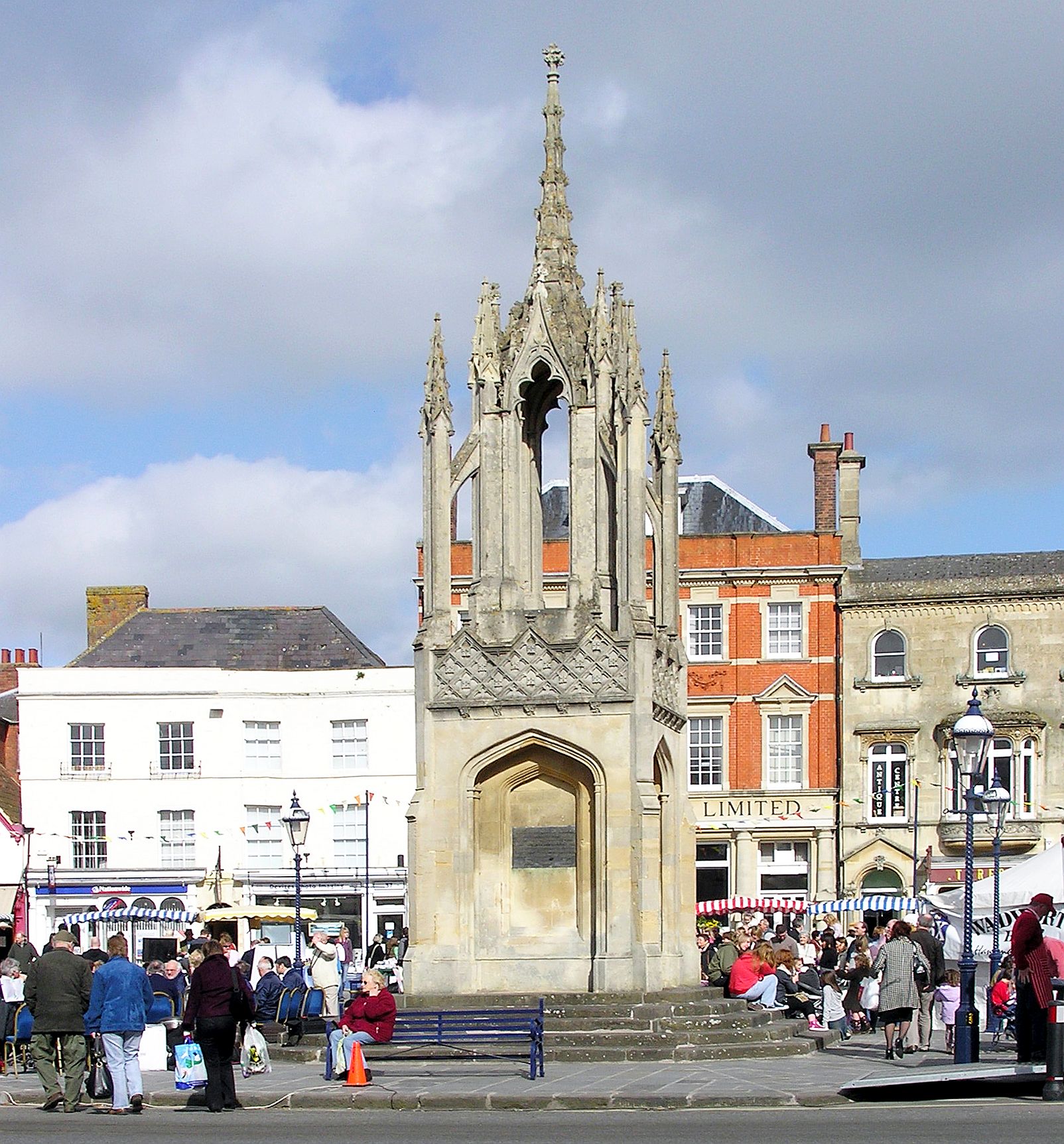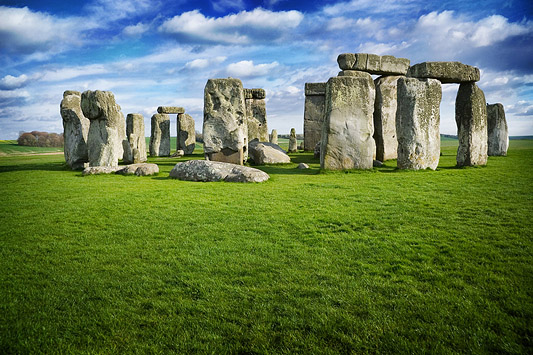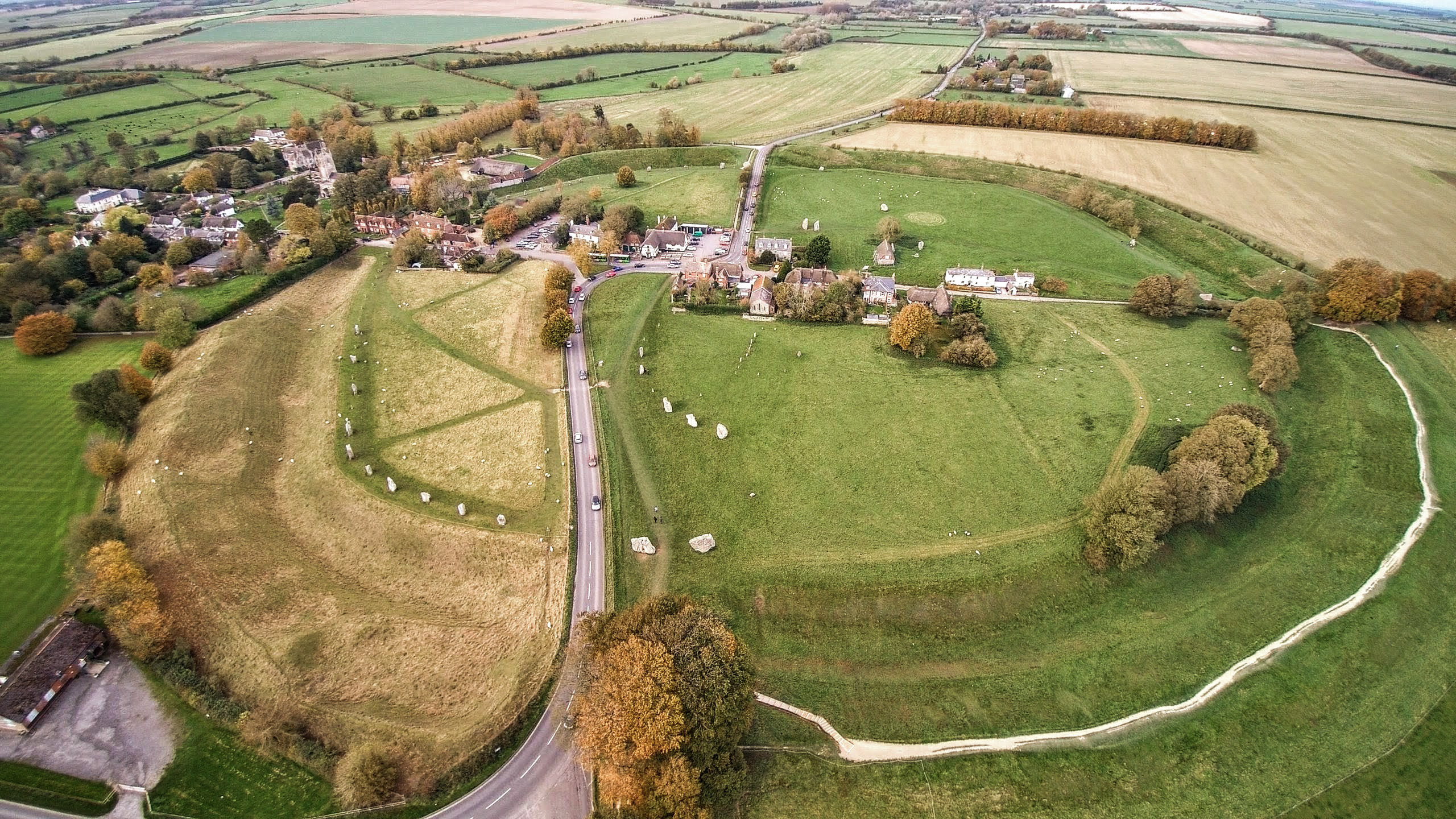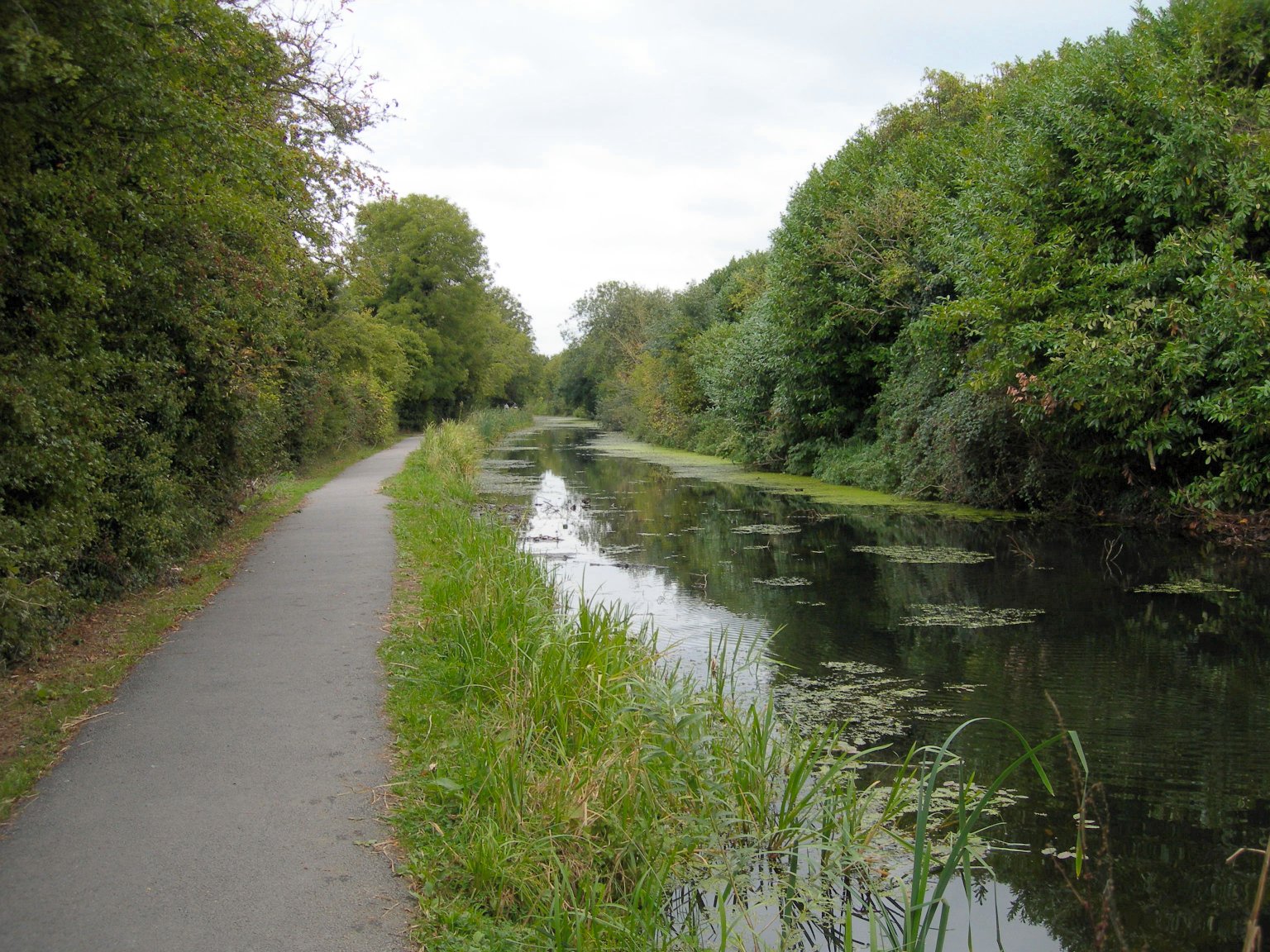|
Wiltshire Museum
The Wiltshire Museum, formerly known as Wiltshire Heritage Museum and Devizes Museum, is a museum, archive and library and art gallery in Devizes, Wiltshire, England. The museum was established and is run by the Wiltshire Archaeological and Natural History Society (WANHS), a registered charity founded in 1853. After the purchase of an old grammar school the museum was opened in 1873. Subsequently, it expanded into two Georgian houses on either side and still occupies this location today. The museum maintains a collection covering the archaeology, art, history and natural history of Wiltshire. This collection covers periods of history from as far back as the Palaeolithic and also includes Neolithic, Bronze Age, Roman, Saxon, Mediaeval and more recent historical artefacts. Among the prehistoric collections are items from the Stonehenge and Avebury World Heritage Site. Several of the collections have been designated as being a significant part of England's cultural heritage. ... [...More Info...] [...Related Items...] OR: [Wikipedia] [Google] [Baidu] |
Devizes
Devizes is a market town and civil parish in Wiltshire, England. It developed around Devizes Castle, an 11th-century Norman architecture, Norman castle, and received a charter in 1141. The castle was besieged during the Anarchy, a 12th-century civil war between Stephen of England and Empress Matilda, and again during the English Civil War when the Cavaliers lifted the siege at the Battle of Roundway Down. Devizes remained under Royalist control until 1645, when Oliver Cromwell attacked and forced the Royalists to surrender. The castle was Slighting, destroyed in 1648 on the orders of Parliament, and today little remains of it. From the 16th century Devizes became known for its textiles, and by the early 18th century it held the largest corn market in the West Country, constructing the Corn Exchange in 1857. In the 18th century, brewing, curing of tobacco, and Snuff (tobacco), snuff-making were established. The Wadworth Brewery was founded in the town in 1875. Standing at the w ... [...More Info...] [...Related Items...] OR: [Wikipedia] [Google] [Baidu] |
Designation Scheme
The Designation Scheme is an English system that awards "Designated status" to museum, library and archive collections of national and international importance. The Scheme is administered by Arts Council England (ACE). As of 2020, 152 collections are officially designated. National museums are not eligible for Designated status. The Scheme was first launched in 1997 under the auspices of what eventually became the Museums, Libraries and Archives Council (MLA) and originally covered only museum collections. Harewood House became the first stately home to be awarded Designated status in 1998. The scheme was expanded to cover libraries and archives in 2005. Responsibility was transferred to the Arts Council in October 2011 following the closure of the MLA. Designated collections * Ashmolean Museum, Oxford * Barber Institute of Fine Arts, Birmingham * The Baring Archive, London * Bath & North East Somerset Heritage Services ** Fashion Museum, Bath ** Roman Baths Museum ** Bath ... [...More Info...] [...Related Items...] OR: [Wikipedia] [Google] [Baidu] |
Eric Ravilious
Eric William Ravilious (22 July 1903 – 2 September 1942) was a British painter, designer, book illustrator and wood-engraver. He grew up in Sussex, and is particularly known for his watercolours of the South Downs and other English landscapes, which examine English landscape and vernacular art with an off-kilter, modernist sensibility and clarity. He served as a war artist, and was the first British war artist to die on active service in World War II when the aircraft he was in was lost off Iceland. Life Ravilious was born on 22 July 1903 in Churchfield Road, Acton, London, the son of Frank Ravilious and his wife Emma (''née'' Ford). While he was still a small child the family moved to Eastbourne in Sussex, where his parents ran an antiques shop.Constable, 1982, p. 14. Ravilious was educated at Eastbourne Grammar School. In 1919 he won a scholarship to Eastbourne School of Art and in 1922 another to study at the Design School at the Royal College of Art. There he became ... [...More Info...] [...Related Items...] OR: [Wikipedia] [Google] [Baidu] |
Stonehenge
Stonehenge is a prehistoric monument on Salisbury Plain in Wiltshire, England, west of Amesbury. It consists of an outer ring of vertical sarsen standing stones, each around high, wide, and weighing around 25 tons, topped by connecting horizontal lintel stones. Inside is a ring of smaller bluestones. Inside these are free-standing trilithons, two bulkier vertical sarsens joined by one lintel. The whole monument, now ruinous, is aligned towards the sunrise on the summer solstice. The stones are set within earthworks in the middle of the densest complex of Neolithic and Bronze Age monuments in England, including several hundred ''tumuli'' (burial mounds). Archaeologists believe that Stonehenge was constructed from around 3000 BC to 2000 BC. The surrounding circular earth bank and ditch, which constitute the earliest phase of the monument, have been dated to about 3100 BC. Radiocarbon dating suggests that the first bluestones were raised between 2400 and 2200 BC, althou ... [...More Info...] [...Related Items...] OR: [Wikipedia] [Google] [Baidu] |
Amesbury
Amesbury () is a town and civil parish in Wiltshire, England. It is known for the prehistoric monument of Stonehenge which is within the parish. The town is claimed to be the oldest occupied settlement in Great Britain, having been first settled around 8820 BC. The parish includes the hamlets of Ratfyn and West Amesbury, and part of Boscombe Down military airfield. Etymology The derivation of the name of the town is uncertain. It may derive from an Anglo-Saxon named ''Ambre'', or from the Old English ''amore-burh'' meaning 'fortification frequented by buntings or/and Yellowhammers'. It has also been suggested that the name is derived from Ambrosius Aurelianus, leader of Romano-British resistance to Saxon invasions in the 5th century. Geography Amesbury is located in southern Wiltshire, north-northeast of Salisbury on the A345. It sits in the River Avon valley on the southern fringes of Salisbury Plain and has historically been considered an important river crossing area on ... [...More Info...] [...Related Items...] OR: [Wikipedia] [Google] [Baidu] |
Avebury
Avebury () is a Neolithic henge monument containing three stone circles, around the village of Avebury in Wiltshire, in southwest England. One of the best known prehistoric sites in Britain, it contains the largest megalithic stone circle in the world. It is both a tourist attraction and a place of religious importance to contemporary pagans. Constructed over several hundred years in the third millennium BC, during the Neolithic, or New Stone Age, the monument comprises a large henge (a bank and a ditch) with a large outer stone circle and two separate smaller stone circles situated inside the centre of the monument. Its original purpose is unknown, although archaeologists believe that it was most likely used for some form of ritual or ceremony. The Avebury monument is a part of a larger prehistoric landscape containing several older monuments nearby, including West Kennet Long Barrow, Windmill Hill and Silbury Hill. By the Iron Age, the site had been effectively abandoned, ... [...More Info...] [...Related Items...] OR: [Wikipedia] [Google] [Baidu] |
Swindon
Swindon () is a town and unitary authority with Borough status in the United Kingdom, borough status in Wiltshire, England. As of the 2021 Census, the population of Swindon was 201,669, making it the largest town in the county. The Swindon unitary authority area had a population of 233,410 as of 2021. Located in South West England, the town lies between Bristol, 35 miles (56 kilometres) to its west, and Reading, Berkshire, Reading, equidistant to its east. Recorded in the 1086 Domesday Book as ''Suindune'', it was a small market town until the mid-19th century, when it was selected as the principal site for the Great Western Railway's repair and maintenance Swindon Works, works, leading to a marked increase in its population. The new town constructed for the railway workers produced forward-looking amenities such as the UK’s first lending library and a ‘cradle-to-grave' health care centre that was later used as a blueprint for the National Health Service, NHS. After the W ... [...More Info...] [...Related Items...] OR: [Wikipedia] [Google] [Baidu] |
Bathyspondylus
''Bathyspondylus'' is an extinct genus of plesiosaur from the Kimmeridge Clay Formation of Swindon, England. Because it is known only from its fossil vertebrae (and so few of those have been recovered), paleontologists are not entirely sure of the taxonomy of ''Bathyspondylus''; the family it belongs to is not currently known.Cladistic Analysis of the Plesiosauria (Reptilia: Sauropterygia)Adam Stuart Smith, Supervised by M. J. Benton. University of Bristol, Department of Earth Sciences. September 2003. pg. 18 The type, and only known, species is ''B. swindoniensis'', which was described from the same material as its genus. Etymology The genus name ''Bathyspondylus'' is a compound of two Greek roots: βαθυς (''bathys'') 'deep' and σπονδυλος (''spondylos'') 'vertebra'. It can thus be translated as "deep-vertebrae". The species name ''B. swindoniensis'' refers to the town of Swindon in Wiltshire, near which the holotype specimen was discovered. Discovery and naming ... [...More Info...] [...Related Items...] OR: [Wikipedia] [Google] [Baidu] |
Plesiosaur
The Plesiosauria (; Greek: πλησίος, ''plesios'', meaning "near to" and ''sauros'', meaning "lizard") or plesiosaurs are an order or clade of extinct Mesozoic marine reptiles, belonging to the Sauropterygia. Plesiosaurs first appeared in the latest Triassic Period, possibly in the Rhaetian stage, about 203 million years ago. They became especially common during the Jurassic Period, thriving until their disappearance due to the Cretaceous–Paleogene extinction event at the end of the Cretaceous Period, about 66 million years ago. They had a worldwide oceanic distribution, and some species at least partly inhabited freshwater environments. Plesiosaurs were among the first fossil reptiles discovered. In the beginning of the nineteenth century, scientists realised how distinctive their build was and they were named as a separate order in 1835. The first plesiosaurian genus, the eponymous ''Plesiosaurus'', was named in 1821. Since then, more than a hundred valid ... [...More Info...] [...Related Items...] OR: [Wikipedia] [Google] [Baidu] |
Conservation-restoration
The conservation and restoration of cultural property focuses on protection and care of cultural property (tangible cultural heritage), including artworks, architecture, archaeology, and museum collections. Conservation activities include preventive conservation, examination, documentation, research, treatment, and education. This field is closely allied with conservation science, curators and registrars. Definition Conservation of cultural property involves protection and restoration using "any methods that prove effective in keeping that property in as close to its original condition as possible for as long as possible." Conservation of cultural heritage is often associated with art collections and museums and involves collection care and management through tracking, examination, documentation, exhibition, storage, preventive conservation, and restoration. The scope has widened from art conservation, involving protection and care of artwork and architecture, to conservati ... [...More Info...] [...Related Items...] OR: [Wikipedia] [Google] [Baidu] |
British Museum
The British Museum is a public museum dedicated to human history, art and culture located in the Bloomsbury area of London. Its permanent collection of eight million works is among the largest and most comprehensive in existence. It documents the story of human culture from its beginnings to the present.Among the national museums in London, sculpture and decorative and applied art are in the Victoria and Albert Museum; the British Museum houses earlier art, non-Western art, prints and drawings. The National Gallery holds the national collection of Western European art to about 1900, while art of the 20th century on is at Tate Modern. Tate Britain holds British Art from 1500 onwards. Books, manuscripts and many works on paper are in the British Library. There are significant overlaps between the coverage of the various collections. The British Museum was the first public national museum to cover all fields of knowledge. The museum was established in 1753, largely b ... [...More Info...] [...Related Items...] OR: [Wikipedia] [Google] [Baidu] |
William Cunnington
William Cunnington FSA (1754 – 31 December 1810) was an English antiquarian and archaeologist. Cunnington was a self-educated merchant, who developed an interest in the rich archaeological landscape around the Wiltshire village of Heytesbury where he lived and worked. In contrast to the vast majority of antiquarians of the time, Cunnington realised that to fully understand the barrows which fascinated him, they should be excavated and recorded carefully and methodically. Beginning his work around 1798, the initial investigations were self-funded, but increasingly they attracted the interest of a succession of wealthy patrons including H.P. Wyndham MP (whose sister Laetitia lived at Heytesbury House) and culminating in Sir Richard Colt Hoare (1758–1838) of Stourhead. Hoare's substantial financial investment in Cunnington's work from 1804, and the consequent increase in the number of excavations undertaken, enabled the latter to excavate several hundred barrows across ... [...More Info...] [...Related Items...] OR: [Wikipedia] [Google] [Baidu] |










